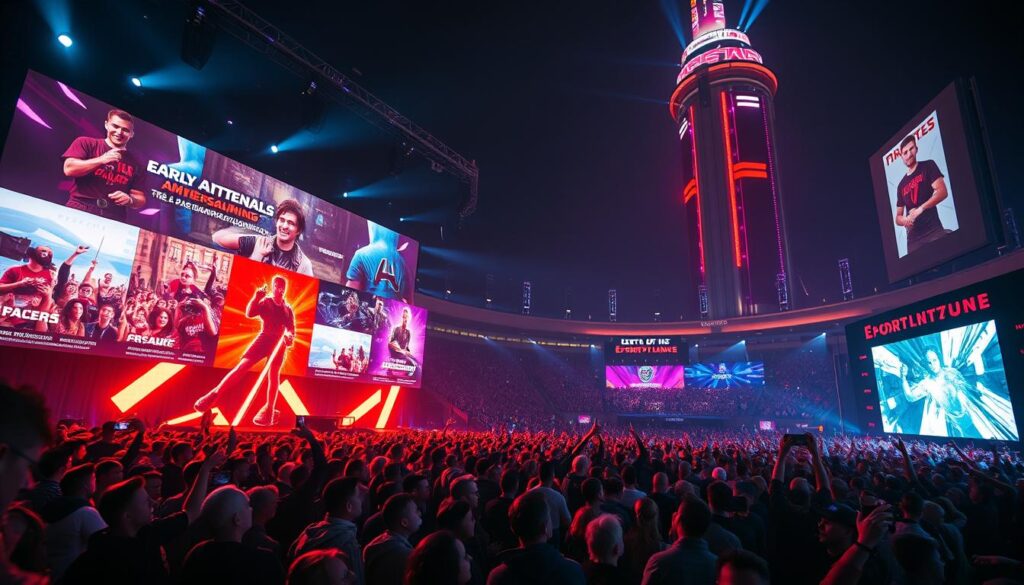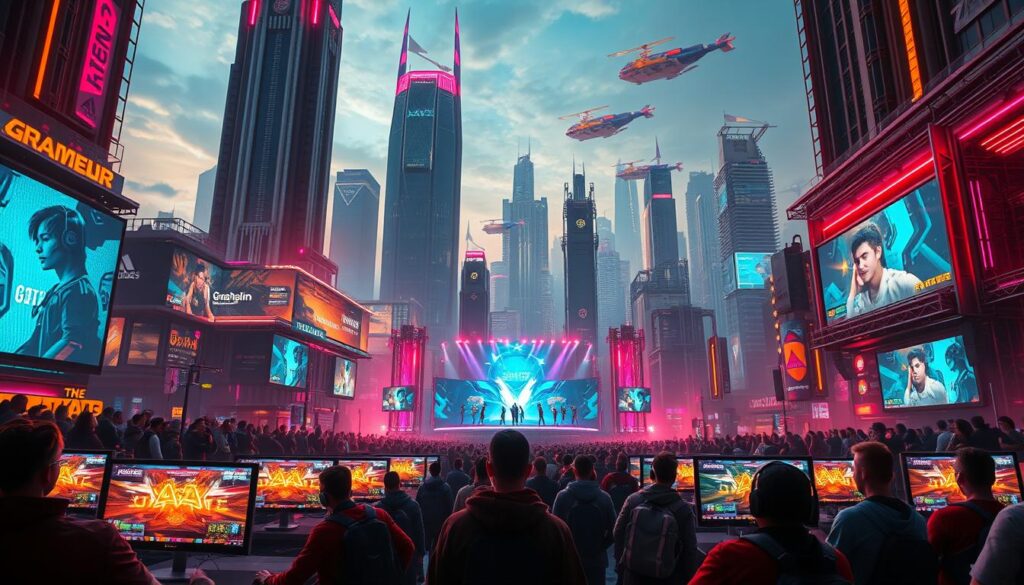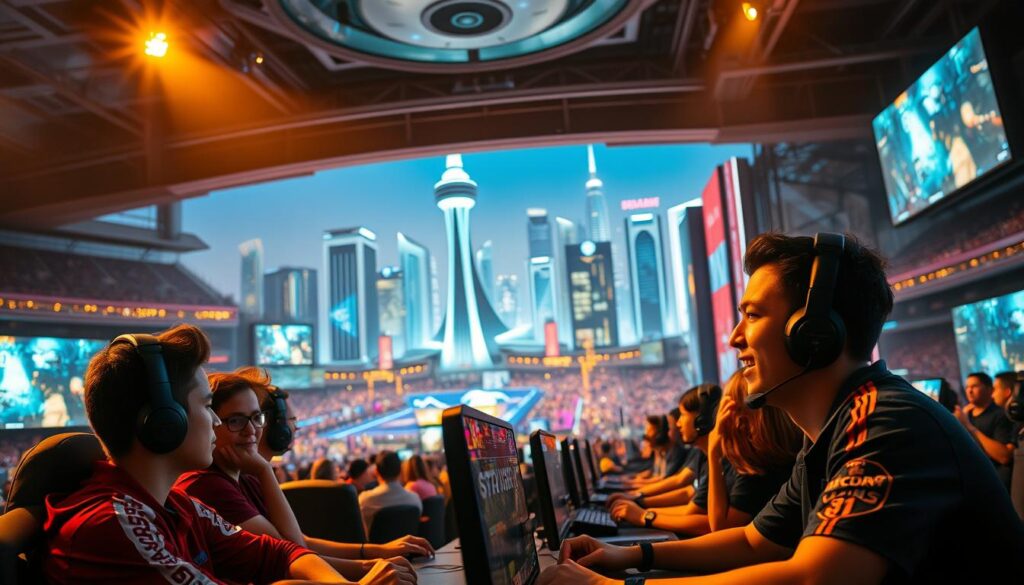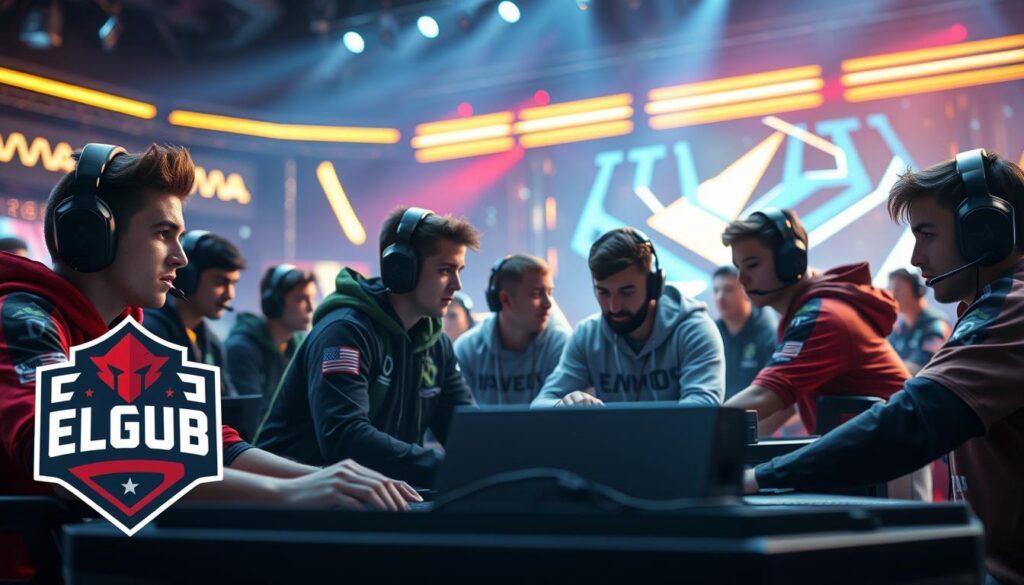Do you remember the feel of quarters in your pocket? The sticky floors and the glow of Pac-Man cabinets? What started as a way for kids to earn bragging rights now fills stadiums like Madison Square Garden. It’s more than just gaming’s growth. It’s a cultural transformation.
The 1980s arcade scene was just starting a revolution. Atari’s 1980 Space Invaders Championship drew 10,000 players – competitive gaming’s first viral moment. By 1997, we moved from pizza-stained joysticks to Red Bull-fueled LAN parties. QuakeCon’s 2,000-player deathmatches were like Woodstock for gamers.
Now, Ninja streams to millions, and League of Legends finals sell out Beijing’s Bird’s Nest. How did a simple game become a profession? The answer is in the numbers: from $0.25 per play to a $1.6 billion industry. Corporate sponsors went from doubting gamers to funding training facilities. Who knew the final boss was boardroom approval?
This timeline isn’t just about looking back. It shows how basement dwellers outsmarted the mainstream. They turned button-mashing into cultural currency. Ready to see how quarters became crypto? Let’s level up.
Early Days in Arcades
Before Twitch and Discord, gaming smelled like burnt popcorn. The arcade era created the first esports gladiators. These were kids who set high scores, dodging curfews and quarter shortages.
Atari’s 1980 Space Invaders Championship was a big deal. It was like the Olympics of pixel warfare. Over 10,000 players competed, showing that beating a friend’s score could entertain many.
| Arcade Milestone | Cultural Impact | Legacy |
|---|---|---|
| Space Invaders (1980) | First national gaming competition | Proved gaming could be mass entertainment |
| Pac-Man Fever (1982) | Crossed into pop music/charts | Showed gaming’s commercial appeal |
| Street Fighter II (1991) | Global arcade diplomacy | Started the fighting game community |
Street Fighter II changed gaming with its six-button system. It was like a UN Summit of arcade culture. Japanese and American players clashed, showing more sportsmanship than some geopolitics.
The real heroes were the arcade machines. They survived spills and Mortal Kombat fatalities. These machines are the veterans of the global phenomenon we see today. Remember, it all began with a kid’s pizza grease on a joystick.
Rise of LAN and Internet Play
The late ’90s brought us boy bands and dial-up tones. It also introduced the sweaty, cable-strewn rituals of LAN warfare. Imagine 20 gamers carrying 40-pound CRT monitors to basements, fueled by Mountain Dew and the urge to headshot friends. This was gaming’s awkward puberty, marking the evolution of esports in its most raw form.
In 1997, the Red Annihilation tournament changed everything. Quake players competed for John Carmack’s Ferrari. The prize was a red 328 GTS, becoming gaming’s Excalibur. Suddenly, LAN parties were proving grounds for competitive gaming’s future.
“We weren’t athletes—we were IT janitors. Half our matches died to someone tripping over an Ethernet cable.”
The internet’s chaotic adolescence followed. ISPs treated our 56k modems like ticking time bombs. Hosting a 16-player Counter-Strike match on dial-up was a neighborhood-wide digital plague of busy signals. Yet, this era birthed mod culture, with today’s $20 battle passes looking tame compared to Counter-Strike’s community-made maps and skins.
Three pillars defined this era:
- Physical endurance (CRT lifting counts as cardio)
- Network wizardry (IPX configuration PTSD is real)
- Pure, uncut competition (no respawns, no hand-holding)
This wasn’t just gaming’s esports timeline. It was a masterclass in grassroots innovation. We built stadiums with Cat5 cables before arenas had fiber optics. And honestly? I’d take a smoke-filled LAN den over a sponsored Discord server any day.
Online Streaming and Viewing
When Twitch started in 2011, it wasn’t just a streaming site. It was like a digital Madison Square Garden that never sleeps. People watched competitive gaming more than NBA games, thanks to EVO 2013’s Street Fighter finals. It was like watching a 24/7 reality show, but with video games.
Dr DisRespect’s mustache and sunglasses made more ad money than Wyoming’s tourism in 2017. Ninja’s Fortnite streams broke records, making parents wonder if virtual forts are child labor.
“We didn’t invent esports – we just gave it a global water cooler.”
Three big changes changed how we watch:
- Real-time interaction made watching more like a show
- 24/7 streaming made time zones and sleep optional
- Streamer personalities became more famous than TV anchors
The chat function created its own secret language. Does “PogChamp” mean something special? Does spamming Kappa faces connect us? Scholars are arguing if Twitch chat is a new form of communication or if we’ve reached our peak.
Here are some platform stats:
| Year | Hours Watched | Cultural Impact |
|---|---|---|
| 2012 | 12 million | Niche hobby |
| 2016 | 292 billion | Mainstream curiosity |
| 2020 | 1+ trillion | Global phenomenon |
This change changed sports entertainment. Why watch edited clips when you can see live rage? Traditional TV had to catch up, while esports saw their true product as shared cultural experience. The history of video games merged with the future of media.
Pro Leagues and Mainstream Fame
When a DOTA2 tournament’s prize pool beat the Masters golf purse, traditional sports execs started sweating. This wasn’t just growth—it was a hostile takeover. Franchise spots in Blizzard’s Overwatch League sold for $20 million apiece, while The International’s $40 million prize pool made the Stanley Cup look small. Esports had become the new American pastime, with billionaire team owners and fans in merch.

Traditional sports’ panic hit its peak when ESPN2 aired Heroes of the Storm tournaments in 2016. The experiment was short-lived, showing Gen Z doesn’t want ads during games. In South Korea, Faker became a cultural icon, selling out stadiums and sneaker collabs before many NBA rookies get their first endorsement.
Let’s look at the economics: Jersey sponsorships in esports are targeted ads for energy drinks and gaming chairs. When T-Mobile puts its logo on a Rainbow Six Siege team’s uniform, it’s targeting the 18-34 demographic. This group sees cable TV as outdated, like Pong.
The evolution of esports shows a harsh truth: Traditional sports aren’t dying—they’re being outmaneuvered. Why watch fourth-quarter timeouts when you can see Valorant pros make game-winning plays every 45 seconds? Franchise models and seven-figure prize pools legitimized competitive gaming. They created a parallel entertainment universe where quick reflexes are more important than retirement plans.
Tech Driving Esports
Remember when winning a Street Fighter match was all about luck and the CRT monitor gods? Today, esports tech has advanced so much. The history of video games is now about high-speed tech, where every small improvement can make a big difference.
Let’s talk about the tech race. NVIDIA’s Reflex technology has cut input latency by 80%. This is huge, like the difference between dodging a bullet or getting hit in Apex Legends. Modern 144Hz monitors offer smoother visuals, like a Bond villain’s martini. But, surprisingly, some pros prefer old PS1 controllers for their “authentic” feel.
- 5G networks deliver mobile esports with super-fast ping times
- Cloud gaming platforms turn smartphones into battle stations
- AI coaches analyze player micro-expressions during tournaments
The esports timeline shows a big shift from LAN parties to stadiums. Players’ heart rates are now broadcast like sports stats. My prediction? Elon’s Neuralink will lead to the first cybernetic doping scandal by 2030. Imagine a pro “accidentally” accessing Wikipedia through their brain implant during a match.
“You don’t win championships with talent alone anymore. You win them in the milliseconds between the GPU and the screen.”
As we move toward a future of cyber-athletes, a big question is: Can game developers keep up with tech advancements? With today’s phones having more power than NASA’s 1969 computers, the real challenge isn’t just building better tech. It’s creating games that match our advanced hardware.
Lessons for Future Growth

The esports gold rush makes crypto bros look like cautious investors. For every Faker banking seven figures, there’s an army of “pro gamers” destroying their health for Twitch viewer counts that wouldn’t fill a college lecture hall. Let’s cut through the TikTok hype with three brutal truths from the history of video games:
- 62% of pro players report chronic stress (2023 Burnout Survey)
- RSI injuries now outpace traditional sports casualties 3:1
- Team contracts often contain “hardware upgrade clauses” – you’re literally leased like RAM
But here’s the million-dollar question: How did Korean PC bang culture produce legends while our Discord-obsessed generation churns out Adderall zombies? The evolution of esports offers a survival blueprint:
“Treat your career like a speedrun – optimize routes, study patterns, and never ignore power-up opportunities.”
Three Hacks for Sustainable Success
- Diversify your loot: Streamers who master commentary outlast pure mechanics
- Respawn strategically: Mandatory 15-minute breaks every 90 minutes
- Join the right guild: Orgs with actual healthcare > flashy jersey deals
The future of esports belongs to hybrids – players who understand content creation as well as headshot percentages. Remember: Ninja retired at 28. Summit1g’s is 33 and going strong. Choose your character wisely.
Conclusion
We’ve seen a big change from coin-op cabinets to huge prize pools in esports evolution. It’s no longer just a subculture but a mainstream sport. The esports timeline is like a Silicon Valley success story.
It started with small LAN parties and grew into huge stadiums. Twitch streams are now as popular as cable TV. Even NFL end zones have Fortnite dances.
Esports has created new careers beyond just playing games. Coaches and castors are now key figures. They analyze strategies and narrate games with great passion.
Content creators build huge followings from game highlights. It’s not just gaming; it’s like the NBA but with RGB lights.
Games like CS:GO and Valorant have built entire ecosystems. Pro players become influencers quickly, getting sponsorships. A 16-year-old can now earn more than veteran athletes.
This shows how the playing field has changed. It’s a big shift.
Esports has made “skill issue” a cool thing to say. Every basement gamer dreams of becoming a pro. No college degree needed.
Will VR arenas make esports even more like Tron? Maybe. But today’s message is clear: Never underestimate kids with dreams and controllers. Next, maybe esports Olympics? GG, world. GG.




